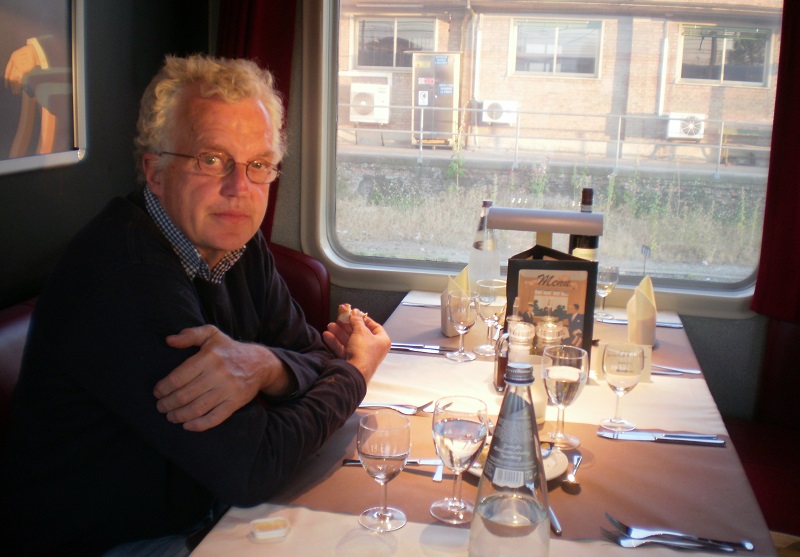There is a constant search for innovation in transport. I’ve lost count of the number of new methods of transport which have been announced, only to never see the light of day or to be stuck at the stage of some sort of pilot study or trial which has never developed further. At various times I have been briefed by promoters of fast boats along the Thames, an industrial canal system from coast to coast in northern England and rocket planes that will take just an hour to reach Australia, all with equal enthusiasm and similarly scant results – at least so far.
Therefore I was a bit sceptical when I was asked to go visit the ULTra (Urban Light Transit) system of pods which is just celebrating its first anniversary at Heathrow Terminal Five. This provides transport between the long stay car park and Terminal 5 with pods – about the size of a Smartcar – which carry up to four people and are activated by the user, travelling at speeds of up to 40 kph along a dedicated track. Martin Lowson, who designed and has seen through the project to fruition, says this provides a far better than the buses which used to take passengers between the car park and the airport since that involved waits of up to a quarter of an hour, while the pods provide instant transfer and use less carbon. They are, too, rather fun as the drive along the track is rather like a dodgem car ride, though fortunately the sensors guarantee that there are no collisions. I loved, in particular, the way they automatically reverse themselves out of their bays and then speed forward.
All in all, it is an impressive scheme and perhaps surprising that this British invention has not received more publicity and support. Lowson, a former rocket scientist who was at NASA for the Apollo programme, has worked on the concept since the mid 1990s and much of the technology was developed at the University of Bristol. Certainly, it merits wider consideration than it has been given
In fact, the concept has attracted a surprising amount of criticism with whole websites devoted to deriding the very idea of individualised public transport. There have, indeed, been numerous false starts. The idea of personal rapid transit was originally developed in the 1960s as a way of providing public transport in areas of low density, and various schemes, involving individual vehicles on tracks controlled automatically.
Only one scheme was actually built, a 14km line linking campuses of the university in Morgantown, West Virginia that is now more than 30 years old. This uses an electrified track and it was initially beset with technical problems, though today if provides a cheap and effective form of mass transit, clearing the roads of the Morgantown that used to be in a permanent state of gridlock.
ULTra in Heathrow is simpler because the pods use rubber wheels and a concrete track which crosses the roads and various other airport facilities on an overpass and even taking into account development and research, cost barely £30m. A clever combination of using very sophisticated software, together with tried and tested hardware – rubber wheels, the guts of a Ford Focus chassis, sensors – has reduced the costs of the idea and opened the way for its wider application. Crucially, the Heathrow pods have batteries that are recharged when they are not in use and therefore obviates the need for expensive and potentially dangerous electrified track.
On the face of it, the very idea of individualized public transit seems contradictory and perhaps that is why schemes have attracted scepticism from both the Left and Right of the political spectrum. The Right see it as just another way of wasting government money, the Left as a way of individualizing public transport. This opposition has marred the development of what could be a genuine third way for transportation with potentially wide application. Already ULTra is in the last stages of negotiation for a far bigger scheme taking up to 100,000 people daily from the railway and bus stations to the Golden Temple in Amritsar
Lowson, who has worked tirelessly to promote is annoyed that ULTra type schemes are ineligible for government carbon reduction schemes because ‘they can’t categorise us. We are different, as we are not a car, a train, or a bus. Therefore money we don’t qualify programmes to develop automatic cars. It’s really frustrating.’
Lowson is a genuine innovator, an enthusiast to the point of eccentricity but in fact his concept is neither crazy nor outlandish. It is potentially a genuine cost effective solution to many transport needs and deserves wider attention and support, rather than being confined to a car park connection in an obscure part of an airport.
